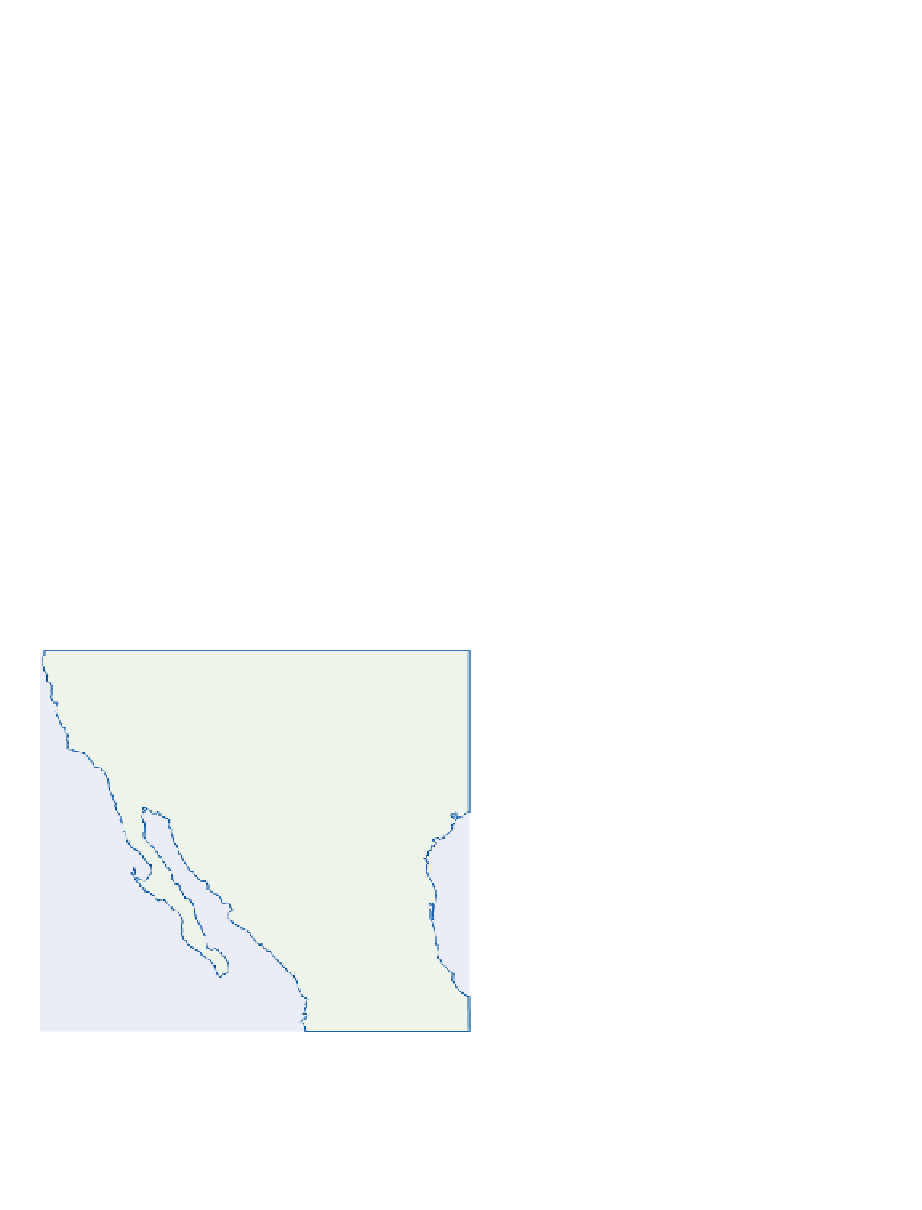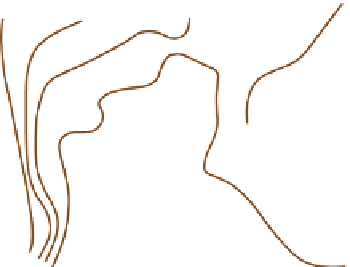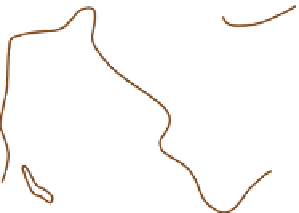Geoscience Reference
In-Depth Information
Pacific subtropical high pressure cell. The re-
establishment of the cell in spring, before the main
period of intense surface heating and convectional
showers, is associated with the most persistent
drought episodes. Dry westerly to southwesterly
flow from the eastern edge of the Pacific sub-
tropical anticyclone is responsible for the low
rainfall during this season. During one 29-year
period in Tucson, there were eight spells of more
than 100 consecutive days of complete drought
and 24 periods of more than 70 days. In
2005-2006, Phoenix recorded 143 days without
measurable precipitation. The dry conditions
occasionally lead to dust storms. Yuma records
nine per year, on average, associated with winds
averaging 10-15m s
-1
. They occur both with
cyclonic systems in the cool season and with
summer convective activity. Phoenix experiences
six to seven per year, mainly in summer, with
visibility reduced below 1km in nearly half of
these events.
The period of summer precipitation (known as
the 'North American monsoon') is quite sharply
defined. The southerly airflow regime at the
surface and 700mb (see
Figures 7.4
and
7.10
) often
sets in abruptly around 1 July and is therefore
recognized as a singularity.
Figure 10.24
shows
that southeastern Arizona and southwestern New
Mexico receive over 50 percent of their annual
rainfall during July to September. Further south
over the Sierra Madre Occidentale and the
southern coast of the Gulf of California, this figure
exceeds 70 percent. The American Southwest
forms only the northern part of the area of the
Mexican or North American Monsoon.
Precipitation mainly occurs from convective
cells initiated by surface heating, convergence or,
less commonly, orographic lifting when the
atmosphere is destabilized by upper-level troughs
in the westerlies. These summer convective storms
form in mesoscale clusters, the individual storm
cells together covering less than 3 percent of the
surface area at any one time, and persisting for
less than an hour on average. The storm clusters
move across the country in the direction of the
upper-air motion. Often their motion seems to be
controlled by low-level jet streams. The airflow
associated with these storms is generally southerly
along the southern and western margins of the
Atlantic (or Bermudan) subtropical high. The
moisture at low levels in southern Arizona derives
mainly from the Gulf of California during 'surges'
associated with the south-southwesterly low-level
Sonoran jet (850-700mb). Moisture from the Gulf
of Mexico reaches higher elevations in Arizona-
New Mexico with southeasterly flows at 700mb.
Precipitation from these convective cells is
extremely local and is commonly concentrated in
the mid-afternoon and evening. Intensities are
much higher than in winter, half the summer rain
falling at more than 10mm per hour. During a 29-
year period, about a quarter of the mean annual
precipitation fell in storms giving 25mm or more
per day. These intensities are much less than those
associated with rainstorms in the humid tropics,
but the sparsity of vegetation in the drier regions
allows the rain to produce flash floods and
considerable surface erosion.
120°W
10
110°
100°
30
20
35°N
30
20
30°
60
65
70
70
40
50
25°
50
20°
Figure 10.24
The contribution (percent) of JJA precipita-
tion to the annual total in the southwestern United States
and northern Mexico. Area greater than 50 percent stippled
and greater than 70 percent hatched.
Source: After M. W. Douglas et al. (1993, p.1667, fig. 3). Courtesy of the
American Meteorological Society.



































